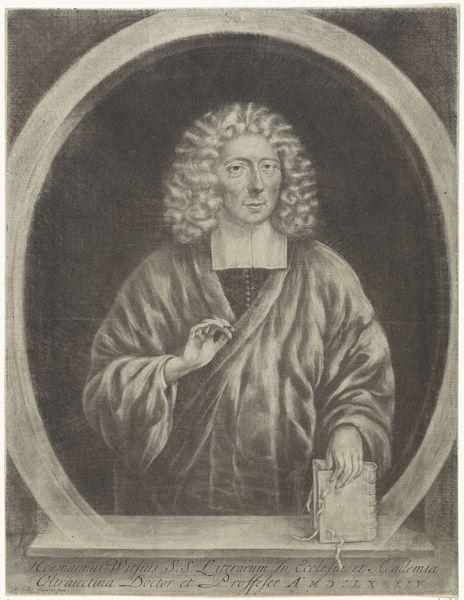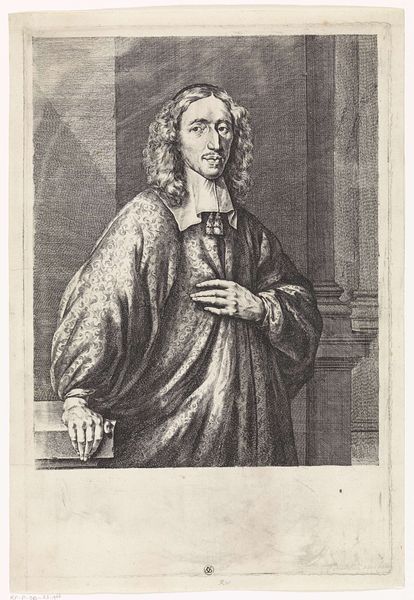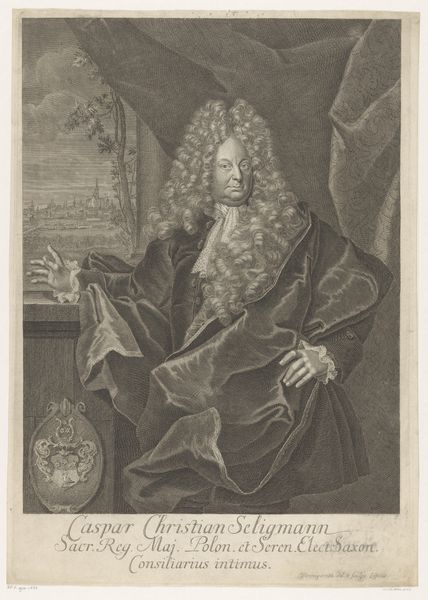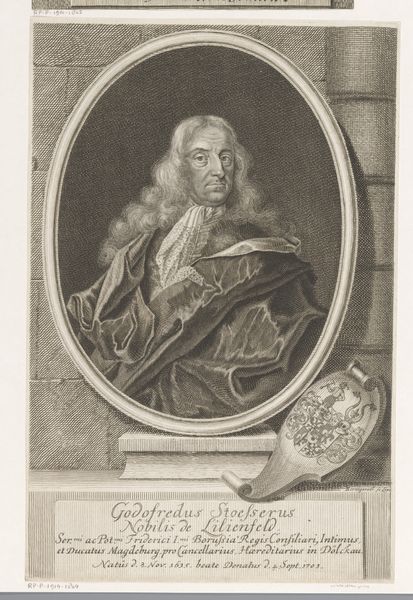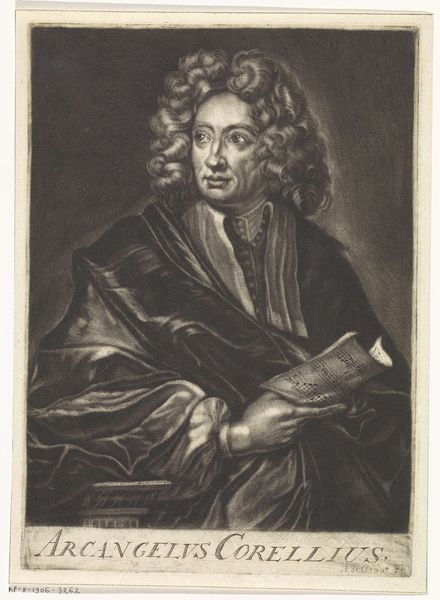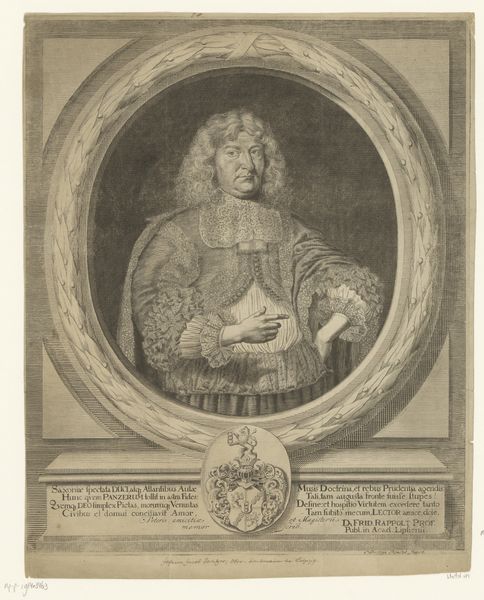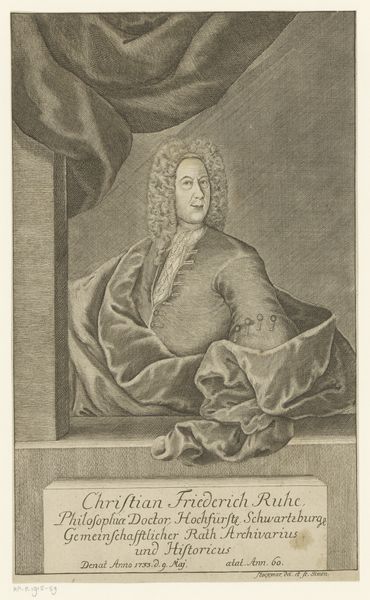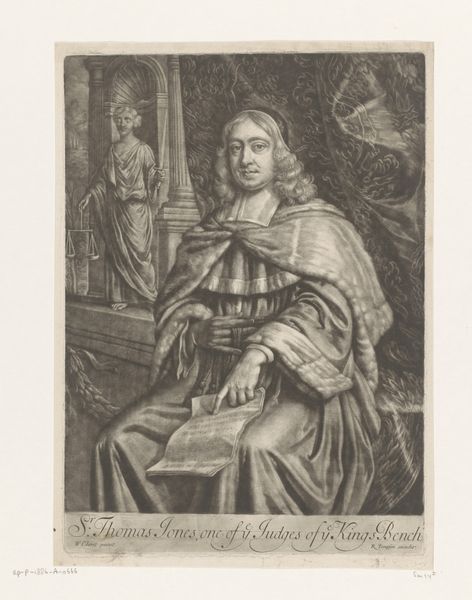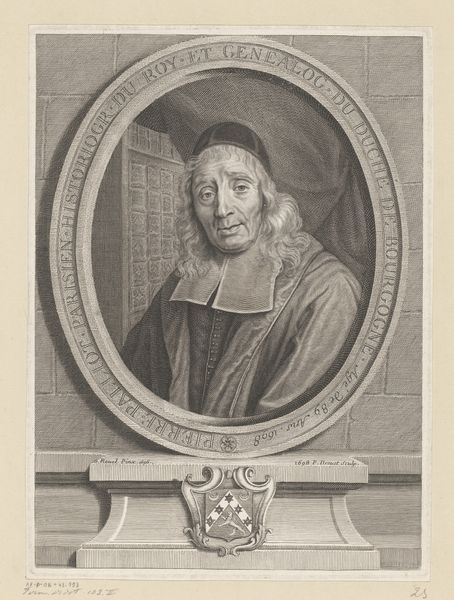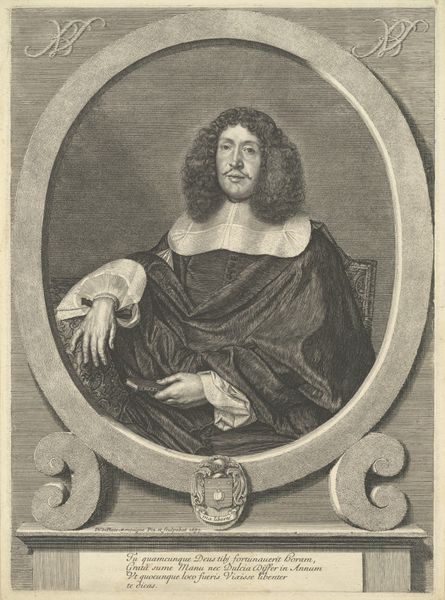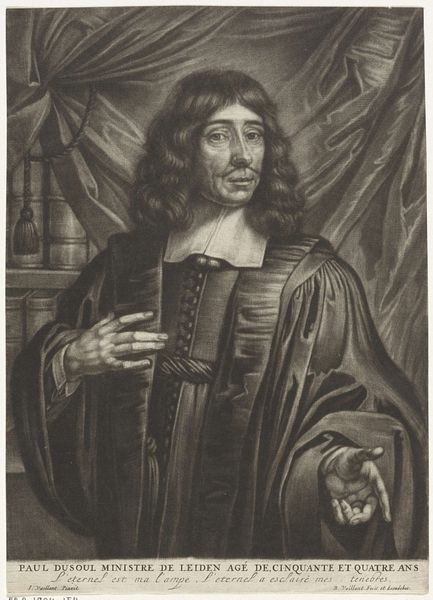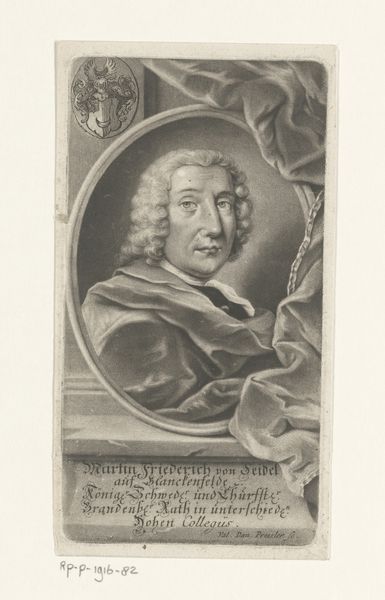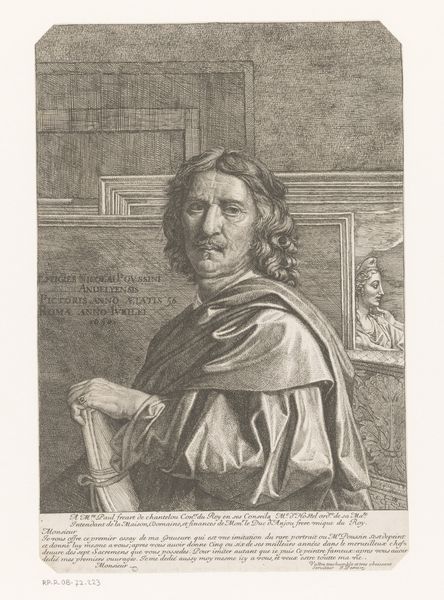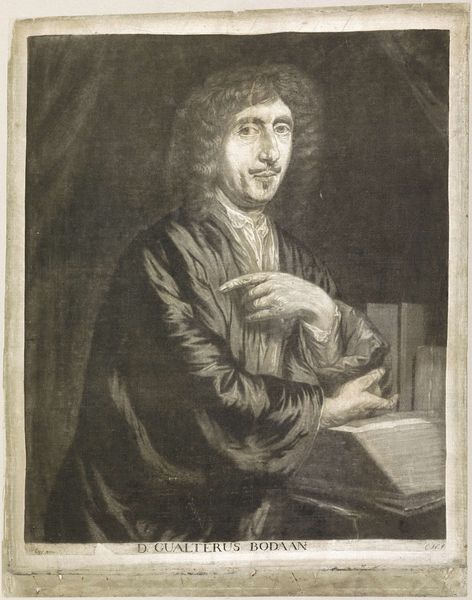
#
pencil drawn
#
facial expression drawing
#
light pencil work
#
book
#
pencil sketch
#
caricature
#
charcoal drawing
#
portrait reference
#
pencil drawing
#
portrait drawing
#
pencil work
Dimensions: height 296 mm, width 227 mm
Copyright: Rijks Museum: Open Domain
Editor: This is a rather intriguing drawing. It's called "Portret van Herman Witsius," made in 1684 by Michiel Gillig. The delicate lines give it a surprisingly modern feel, despite the period attire. I find the setting quite theatrical – almost like he’s on a stage. How do you interpret this work? Curator: It's crucial to understand this portrait within the context of the 17th-century Dutch Republic. Portraiture was vital for solidifying social standing. Who Witsius was and why his image circulated really matters. Notice the book— a clear symbol of learning. His gesture and the book visually communicate status, doesn’t it? Editor: Yes, absolutely. So, the visual language underscores his position within academia and religious circles. Curator: Precisely. Printmaking made images accessible beyond elite circles, contributing to a broader culture of recognition. How do you think this portrait would function in the wider social sphere? Editor: Interesting. The multiplication of his image signifies an attempt to disseminate not just his likeness, but also the ideals and authority he represents. Curator: Exactly. It's a political statement as much as it is a personal likeness, reflecting and reinforcing established hierarchies through the circulation of imagery. It makes you think about the role that art plays to both mirror and mold social power, even today. Editor: I see your point. I was focusing on the subject, but there is so much in this artwork that relates to cultural and institutional matters. Thanks! Curator: My pleasure. Analyzing images beyond their surface can really enrich our understanding.
Comments
No comments
Be the first to comment and join the conversation on the ultimate creative platform.
